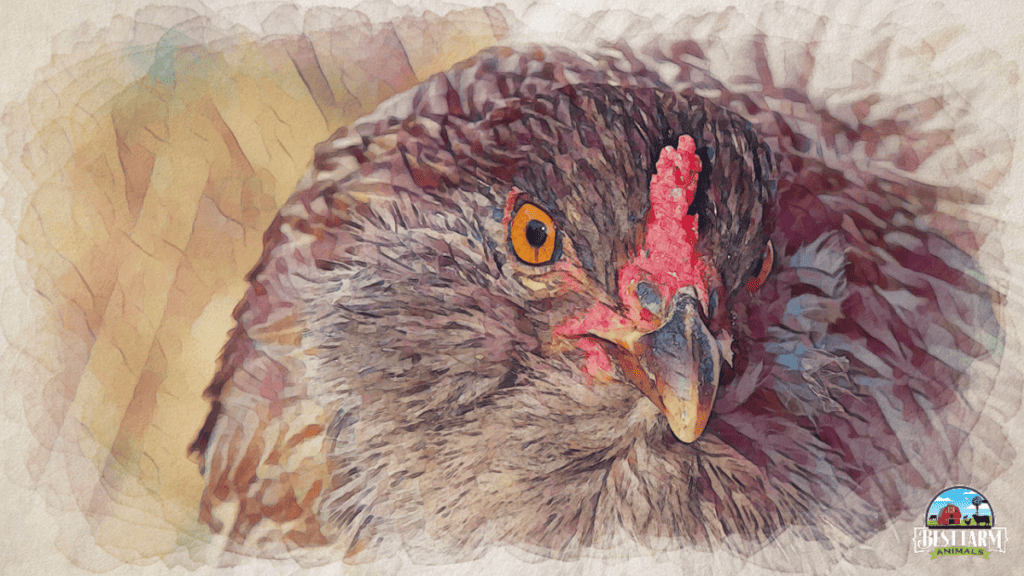Ever wondered about the rainbow of hues in your egg basket? Well, you’re in the right place. From the shimmering blues to the earthy olives, Easter Egger chickens grace our breakfast plates with an array of colored eggs, making every morning feel just a little bit magical.
Perhaps you’re considering adding some of these delightful chicken breeds to your backyard flock. Or maybe you’re simply a poultry enthusiast with an appetite for knowledge and eggs.
Whatever your reasons, we’re here to fan the flame of your interest with everything you need to know about these charming chickens.
What breed are Easter Eggers?
Easter Egger isn’t a breed but a type of chicken resulting from crossbreeding Araucanas or Ameraucanas with other breeds. They are beloved for their colorful egg-laying abilities and adaptability, making them great for beginners. The term “Easter Egger” refers to their festive, diverse egg colors. While not rare, each Easter Egger is a unique mix, adding a delightful breed to your flock.
From the unique genetics that result in their varied egg colors to practical tips for maximizing their egg-laying potential, our ultimate guide to Easter Egger chickens will leave you clucking with delight and ready to embark on your colorful egg-laying adventure.
Table of Content For Easter Egger Chickens
So, shall we start exploring together? Let’s crack on!
Everything About Easter Egger Egg Production
Easter Egger chickens, esteemed for their variety of egg colors and good laying rate, truly add a vibrant touch to any poultry keeper’s collection.
Easter Eggers are normally priced around $15-$20 per hen, are excellent layers, and serve as dual-purpose chicken breeds. Now, let’s unlock the egg-citing world of Easter Egger’s egg production.

1. Easter Egger Hens Lay Colored Eggs
Easter Eggers are famed for their palette of egg colors. Though Easter Eggers can lay various colors, a blue-green hue is the most common.
Easter Egger hens that lay purple eggs are exceptionally rare, though some deeply tinted blue eggs might give a purple impression. At the same time, Easter Eggers has the potential to lay pink eggs, but it’s less common than blue or green.
Although an individual Easter Egger hen typically lays eggs of one color, that color can vary significantly from one hen to the next. Some Easter Eggers can lay brown or even white eggs due to their mixed-breed background.
Moreover, the color of an Easter Egger’s egg can change slightly over her laying life, but dramatic color changes are rare. While speckled eggs are not the norm for Easter Eggers, they can occur due to genetic diversity within the population.
Most importantly, the color an Easter Egger will lay is a surprise! It can’t be determined until she lays her first egg.
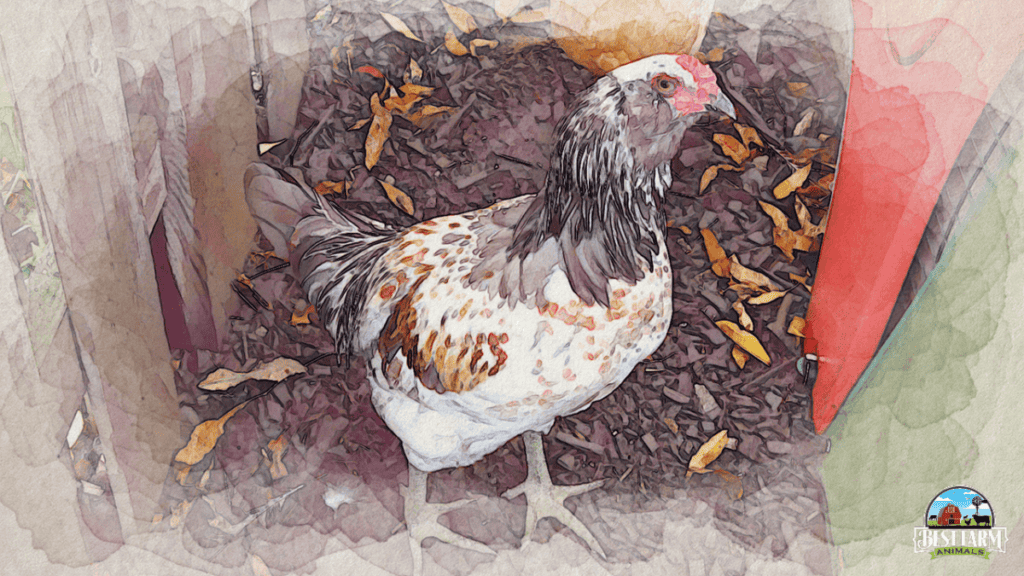
2. Why Do Easter Egger Chickens Lay Colored Eggs?
As explained, the beautiful colored eggs laid by Easter Egger chickens are due to specific pigments added to the eggshell as the egg forms in the hen.
This is due to the “oocyan” gene, derived from Araucanas and Ameraucanas, and produces a pigment that permeates the eggshell, resulting in the beautiful colors we admire.
Easter Eggers’ green eggs result from a blue pigment and a brown coating added as the egg travels through the hen’s oviduct. Moreover, an Easter Egger’s egg color is largely determined by its genetics, specifically the genes it inherits from its Araucana or Ameraucana parentage.
While many Easter Eggers lay blue eggs, the color varies among individual chickens due to their diverse genetic background.
Also, Easter Egger eggs are perfectly good for eating, tasting just as delicious as any other chicken egg.

3. Chicken Easter Egger Is a Reliable Good Layer
Easter Egger chickens lay roughly 200-280 eggs annually, which equates to around 4-5 eggs per week.
An Easter Egger hen will generally lay one egg per day. These eggs usually fall into the medium to large size range. Easter Eggers are early bloomers, typically starting to lay eggs around 20-22 weeks of age.
4. Why Did My Easter Eggers Stop Laying?
Typically, Easter Eggers’ egg production tapers off around 6-7 years of age, but this can be influenced by factors such as diet and overall health.
Like all chickens, Easter Eggers might stop laying due to various factors such as age, decreased daylight hours, stress, illness, or molt.
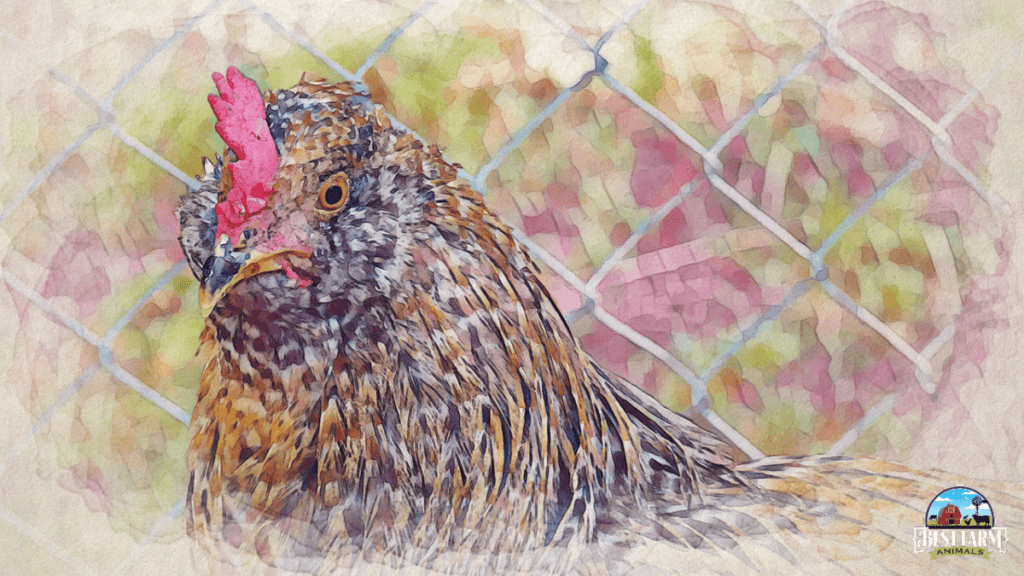
Easter Eggers Temperament: Are They Good As Pets?
Easter Eggers are incredible layers and color-bringers and are renowned for their friendly and curious dispositions, making them a favorite pet among beginners and experienced chicken keepers alike. Easter Eggers grow moderately and can live for up to 8-10 years with proper care.
Here is more information about raising Easter Egger chickens as pets:
Easter Egger chickens make great pets! They are sociable and friendly and enjoy human interaction; their colored eggs bring much delight.
Chicken Easter Eggers are generally docile chickens. While any rooster can exhibit aggressive traits, Easter Egger roosters are typically calm and amiable.
Easter Eggers are kid-friendly. Their gentle nature and curious demeanor make them excellent for families with children.
Easter Egger hens are no noisier than your average chicken. They do have their vocal moments, but they are generally considered quiet chickens.

Easter Eggers can fly, albeit not very high or far. A secure chicken run is recommended to keep them safe.
Easter Eggers roosters should have at least 10 square feet per chicken in the run. They enjoy roaming, so the more space, the better.
Easter Egger hens have a moderate tendency to go broody, though it can vary by individual chicken.
Easter Egger chickens are quite intelligent. They can be taught simple tricks with time and patience, like coming when called or hopping on your arm.
Easter Eggers are relatively easy to care for, requiring basic chicken needs: proper feed, clean water, secure housing, and routine health checks.
Easter Eggers eat a diet of layer feed enriched with grains, vegetables, and occasional treats. They also benefit from oyster shell supplements for calcium and grit for digestion.
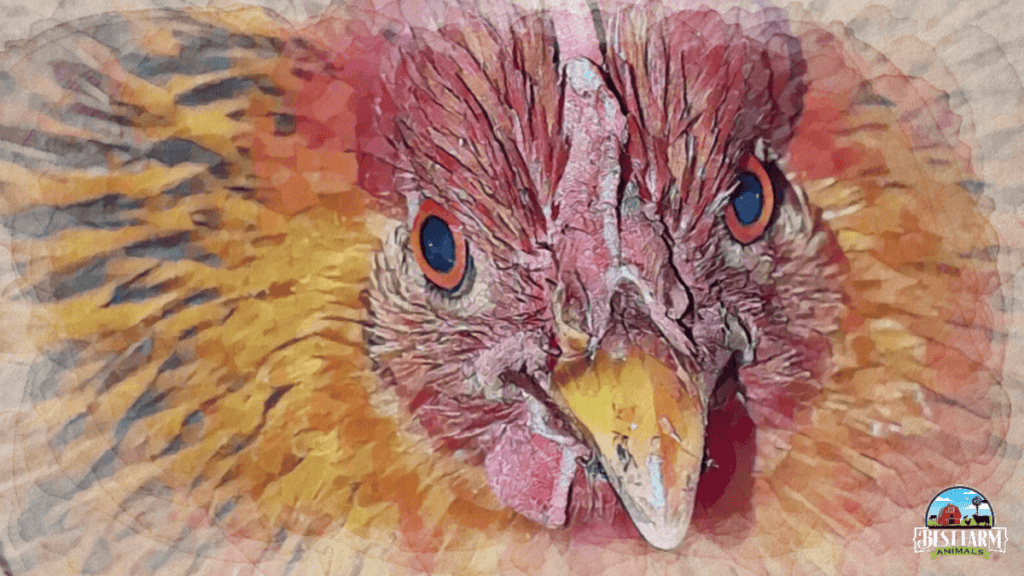
Surprising Fun Facts About Easter Egger Chickens
Easter Egger chickens are truly a bunch of delightful surprises, each with a unique blend of colors, traits, and egg hues. With these delightful chickens, you’re always in for an unexpected treat!
Easter Egger Chicken Comes With Bantam Variety
Easter Eggers predominantly come as standard-sized chickens but also in the smaller bantam variety. Both versions share the signature traits of Easter Eggers, with a fascinating palette of egg colors and a diverse range of feather hues.
Easter Egger Chicken Breeds Can Be Sexed
Easter Eggers, just like any other chicken, can be sexed, although they aren’t an autosexing breed.
Sexing Easter Eggers might be a bit tricky, especially at an early age, because their mixed-breed nature makes sex-linked traits less predictable.

Chickens Like Easter Eggers Do Well in Heat
In terms of heat tolerance, Easter Egger chickens perform relatively well. They have the ability to adapt to a variety of climates, including those on the warmer side.
However, like all chickens, they require proper care during extreme heat, which includes access to shade and plenty of cool, fresh water.
Easter Egger Chicken Breed Came From The U.S.
With their rich history, Easter Eggers was developed in the United States. Their roots trace back to the Araucana and Ameraucana breeds that originally hailed from Chile.
Despite their exciting lineage, they are not considered heritage chickens due to their mixed-breed background.
They’re Also Known As ‘Rainbow Layers’
“Easter Egger” is more of a descriptor than an official breed name. EEs are also known as ‘rainbow layers.’
It is used to characterize chickens that have the capability to lay eggs in shades other than the standard white or brown, thus adding an element of surprise and fun to each day’s egg collection.
Not to mention the name “Easter Eggers” comes from their unique ability to lay colored eggs, reminiscent of painted Easter eggs.
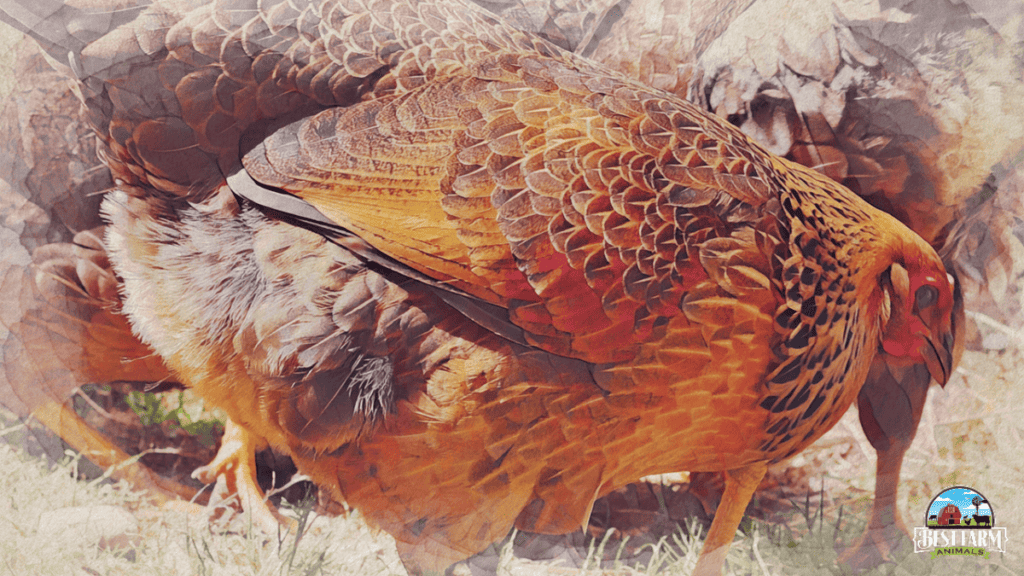
Easter Eggers Have Distinct Characteristics
If you’re wondering whether you have an Easter Egger, look for the telltale signs – unusually colored eggs (blue, green, or even pink), a pea comb, beards or muffs, and feathered legs. They also possess various feather colors and patterns, making each chicken distinct.
At the same time, Easter Eggers are as diverse as a painter’s palette, coming in a vast array of colors and patterns.
Their appearances vary widely, so no two Easter Eggers look alike. This means that there can certainly be black Easter Eggers!
Identifying Easter Egger Hen From Rooster
Determining whether your Easter Egger is a hen or rooster might require patience. Until they reach maturity, their sex might not be evident.
Once mature, hens will begin to lay eggs, while roosters will develop larger combs and wattles, start to crow, and often grow taller and more muscular.
| Easter Egger Hen | Easter Egger Rooster | |
| Size | Medium-sized, typically lighter than roosters | Medium to large, usually taller and more muscular than hens |
| Comb | Smaller pea comb, less pronounced | Larger pea comb, more pronounced and noticeable |
| Beard | May have a beard, though size varies | May have a larger, more pronounced beard |
| Tail | Shorter, rounder tail feathers | Various colors and patterns can be more muted compared to roosters |
| Wattles | Smaller wattles, less noticeable | Larger, more noticeable wattles, prominent in mature roosters |
| Behavior | Generally gentle and docile, might go broody | More assertive, often acts protective and vigilant over the flock |
| Color | Various colors and patterns, can be more muted compared to roosters | Various colors and patterns, often more vivid and vibrant compared to hens |
| Voice | Soft clucking sounds, occasional squawk when alarmed or upset | Will crow, often louder and more vocal, especially at dawn |
My Favorite Chicken and Duck Supplies
This list contains affiliate products. Affiliate products do not cost more but helps to support BestFarmAnimals and our goal to provide farm animal owners with accurate and helpful information.
Manna Pro Oyster Shell keeps eggs strong. Before I gave my chickens oyster shell, I had the oddest eggs, many with weak and irregular shells. Now, I don’t have an issue.
Layer Feed by Manna Pro. I like pellets rather than crumbles as my chickens eat them better and less gets wasted or scavenged by rodents. A good layer feed makes the difference in hens laying many more eggs.
My chickens love this mealworm treat, which gives added protein, something that’s great during molting and winter months.
There are many ways to feed and water your chickens. I like this food and water setup the best because it reduces waste, saves me time feeding and watering, and keeps the food fresh longer. Except, in the winter, I use a heated waterer. The only problem is the heated waterers need to be replaced every few years.
I love this chicken veggie hanger. It makes it easy to give your chickens produce from the garden and keep them occupied in the winter with a fresh head of lettuce.
These chicken toys are a hoot! They will help curb bullying and keep your chickens active, especially in the winter when hens tend to get more lethargic.
Easter Egger FAQs
Is an Easter Egger a hybrid? An Easter Egger is often considered a hybrid or mixed breed chicken. They aren’t a recognized breed because their characteristics can be quite diverse.
They are created by crossbreeding chickens that carry the blue egg gene, which can lead to various egg colors.
What is the difference between an Easter Egger and an Olive Egger chicken? The primary difference between an Easter Egger and an Olive Egger chicken lies in the color of the eggs they lay.
An Easter Egger lays eggs in various colors—blue, green, and even pink or yellow. On the other hand, an Olive Egger, a cross between a hen and a rooster that each has a specific gene, lays olive green eggs.
At what age do Easter Eggers start crowing? Easter Egger roosters may begin to crow anywhere from 4 to 6 months of age. It’s important to remember that each chicken is unique and may start crowing earlier or later based on its individual development and environment.
Conclusion
In conclusion, raising Easter Eggers is akin to finding treasure in your backyard every day. Their diverse egg colors, reliable production, and easy-going personalities make them an excellent choice for anyone looking to add a little more color to their life—or their breakfast plate.
As we say in the farming world, they’re more than just chickens—they’re feathered joy-bringers, delivering surprises most delightfully.

